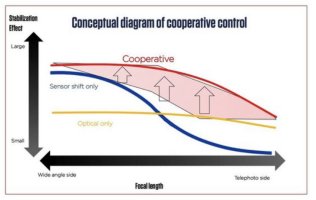The Ansel Adams bit was tongue in cheek. Clearly I know he's not alive. I mentioned tripods as a solution to make IBIS unnecessary, so I'm definitely aware of their impact on IBIS. As I said - specific situations are where IBIS shines. Your exaggerated "4 stops of ISO" example ignores aperture (though 6400 on an R5 is still very good), and yes - if you are shooting still subjects with a telephoto lens, with no IS, handheld, in the dark, then IBIS may provide some qualitative benefits. I don't know why a person who has the coin for an R5 or R5C would be doing that, but anything is possible I suppose.Don't mislead - I haven't said that "a person can't get a sharp photo without sensor and/or lens stabilization", what I've said is that having OIS or IBIS (and preferably both) makes a very significant difference to the ability to hand hold at slow shutter speeds. And I'm not just talking about very slow speeds (1/30 or below) - stabilisation makes long zooms and telephotos MUCH more usuable. My rough estimates are in the post above.
Sure, you can turn the ISO up from 400 to 6400 to compensate for the lack of stabilisation with stills, if you are content with much higher noise levels and lower dynamic range. Or you could find a handy tree or lamp-post to brace yourself against, but they can be hard to come by in open situations such as deserts, beaches, grasslands...
Oh, and you are clearly unaware that the stunning landscapes taken by Ansel Adams, to which you refer, were taken on large format cameras, so the degree of magnification to produce the final prints is very low, unlike the very high magnification when enlarging a 1.5" across FF image to a 24" print! High magnification hugely exaggerates camera shake, if you didn't know.
Furthermore, for almost all of his famous landscapes, Ansel Adams had his camera mounted on a very sturdy TRIPOD. - I assume you comprehend that stabilisation is deactivated (or manually switch off) when working with tripods?
By the way, you can't "ask" Ansel Adams - unless one of your two heads is able to communicate with the deceased.
Upvote
0

